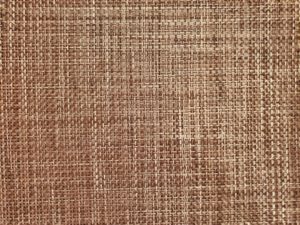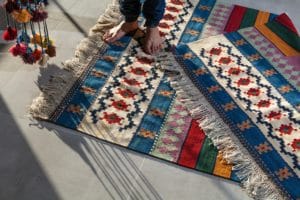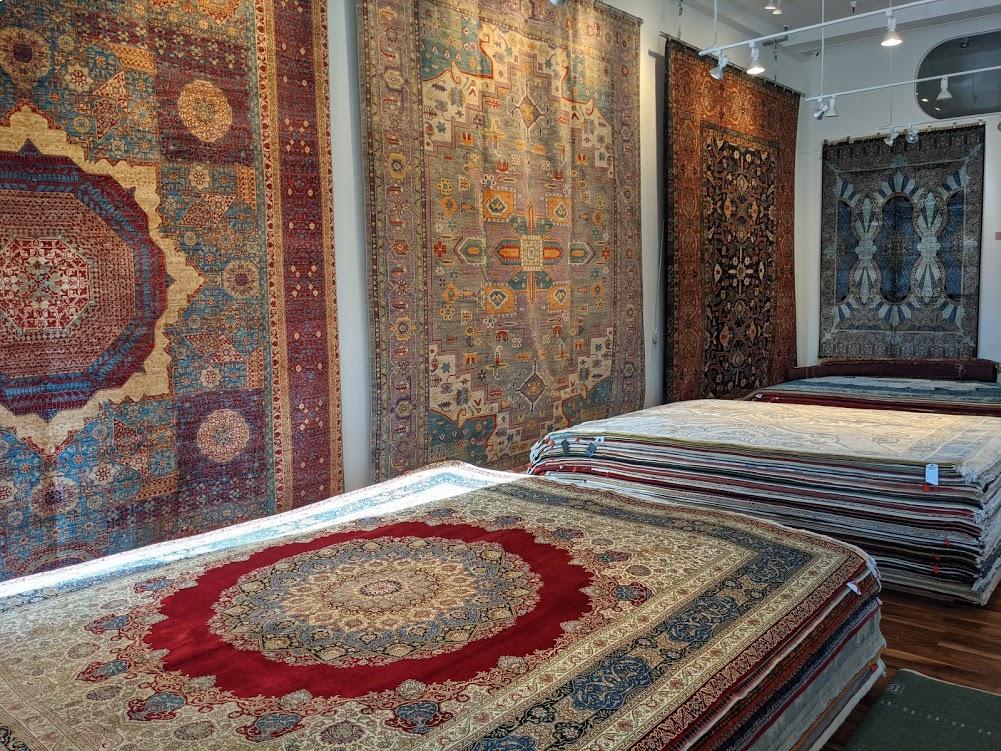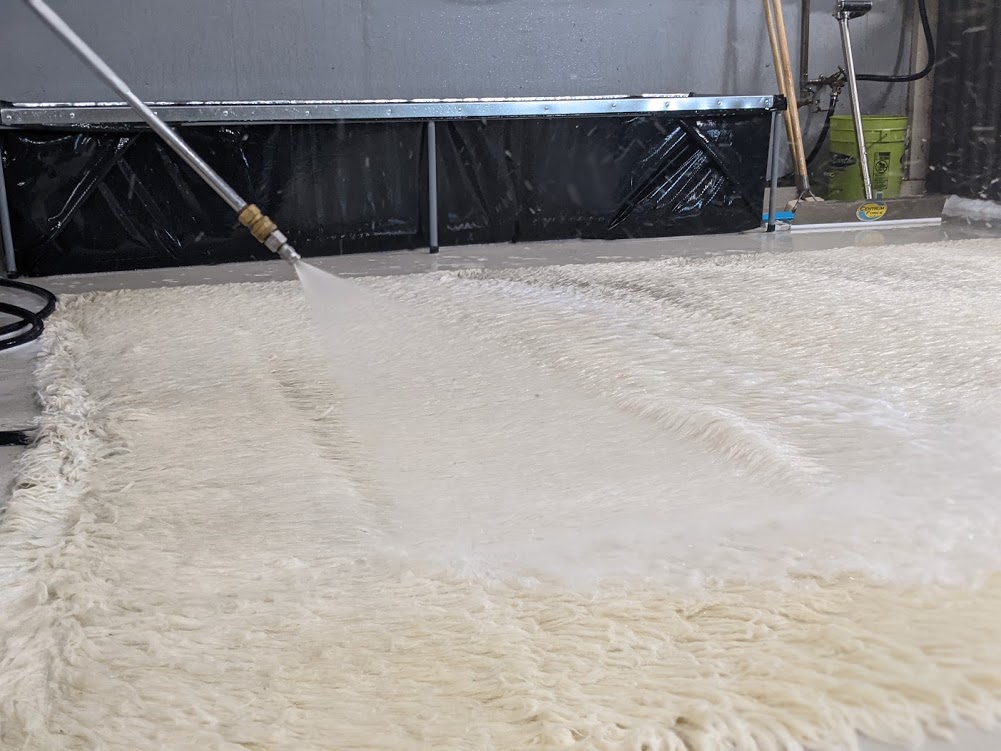If you know one thing about Mother Nature’s Cleaning, it’s that mother nature is the name of the game (quite literally, for us). We’re all about eco-friendly rug and carpet cleaning products and practices – but what about the actual rugs and carpets themselves?
Spoiler alert: we love those, too. And we know a lot about them (and cleaning them).
Here, we talk through some of the best eco-friendly area rug materials you can find, what to look out for when shopping for environmentally friendly products, and tips and advice on how to take care of them.
Why buy an eco-friendly rug?

There are so many good reasons to choose eco-friendly carpets and rugs – they’re better for the planet, the people who make them, your health, and for your home:
- Eco-friendly materials tend to be really good at repelling dirt
- They provide natural insolation
- They are often hypoallergenic
- Made without harmful chemicals and therefore have minimal VOCs and off-gassing
- Often made in factories with better workplace ethics
- Manufacturing process tends to leave a smaller carbon footprint
Environmentally-friendly rugs (and how to choose)
When shopping around for an eco-friendly rug or carpet, look at the material (which should be natural or up-cycled) and the manufacturing conditions (which should prioritize low-emissions, water conservation, and worker wellbeing).
Eco-friendly rug materials

Wool: A great material for rugs or carpets, wool tends to be long-lasting and good for high-traffic areas. It’s a family and pet-friendly option,can handle soiling and stains, and will hold up well over many years. Look for untreated wool that hasn’t been treated with chemicals, finished with natural dyes. And remember to avoid distressed wool rugs!
Cotton: Cotton is another durable natural material that’s often less expensive than wool and comes in a range of versatile designs. When looking for an eco-friendly option, be sure to choose organic or recycled cotton, as conventional cotton production often involves heavy pesticide use and water wastage.
 Jute: Made from a tropical plant, jute fibres are spun into strong threads and turned into everything from hats and bags to homewares. Jute rugs often have a white, brown, or gold color and are finished in an earthy tone.
Jute: Made from a tropical plant, jute fibres are spun into strong threads and turned into everything from hats and bags to homewares. Jute rugs often have a white, brown, or gold color and are finished in an earthy tone.
Hemp: Another plant-based option, hemp plants require little water to grow and are transformed into a soft, flexible fibres that are naturally a tan-brown color. They can be dyed and printed for a bohemian finish – be sure to look for hemp rugs that use natural dyes.
Sisal: Sisal is incredibly eco-friendly to grow – an estimated 1,000 fibres can be harvested from a single leaf. Sisal rugs are generally affordable,and can be easily dyed and colored for versatile style.
Bamboo: Bamboo is a favorite eco-friendly rug material, as bamboo forests require minimal resources and are highly renewable. Bamboo rugs are soft yet strong, an affordable option if you need a durable rug.
Seagrass: Seagrass is a stain-resistant material that’s great for rugs, as its natural coating prevents dirt from building up. Lightweight yet strong, seagrass rugs are typically khaki-colored and have an earthy aesthetic.
Recycled rugs: Many modern brands have started upcycled materials that would have ended up in the landfill and turning the raw fibres into rugs. Some retailers use recycled plastic or clothing to create durable and beautiful rugs that, though not ‘natural’, are a considerably more eco-friendly option than a synthetic rug.
 Second-hand rugs: Purchasing a vintage or second-hand rug is another way to support a circular economy – just be sure to verify that you’re purchasing a good-quality rug that’s made from durable materials.
Second-hand rugs: Purchasing a vintage or second-hand rug is another way to support a circular economy – just be sure to verify that you’re purchasing a good-quality rug that’s made from durable materials.
Backing and underlay: Don’t forget to pay attention to what the rug backing or underlay is made of – some rugs may look eco-friendly on the surface, but are made with non-sustainable foundations that contain harsh chemicals. Choose natural latex, jute, or wool backings.
Note: Sisal, seagrass, jute, hemp, and other plant-based materials will stain permanently if any liquids or dyes are spilled on them. It’s also important to sweep or vacuum them daily, to maintain their quality.
A warning: Avoid viscose
Often touted for being environmentally-friendly and sustainable, viscose rugs actually are bad for the planet (and, most likely, your sanity!). Learn more about why you should avoid viscose.
Eco-friendly and ethical practices

Just because a rug is made from an eco-friendly material, it doesn’t necessarily mean it was constructed in an eco-friendly manner.
When shopping around, do a bit of research on the brand or manufacturer to get an idea of how environmentally-conscious their general business practices are. Look for evidence that they:
- Use ethically sourced materials by practicing sustainable farming, low water usage, replanting and recycling
- Support local supply chains
- Pay workers a fair living wage
- Adhere to fair trade recommendations
Look out for these Green certifications
There are plenty of hardworking people vetting manufactures and brands to make it easy for you to choose eco-friendly rugs and carpets. Some key ones to look for include:
- Green Label and Green Label Plus: Low or no VOC emissions to ensure good indoor air quality (from the CRI)
- GOTS Certified Organic: Use of organic fibres and textiles (from Global Organic Textile Standard)
- GoodWeave label: Ethical working conditions without child or bonded labor (from GoodWeave)
Learn more about green certifications on LeafScore.
Caring for eco-friendly rugs

Making rug care part of your routine will extend the lifespan of your eco-friendly rug – which means you’re continuing to promote sustainability long after your initial purchase. To keep your rug in top shape over the long term, be sure to:
- Vacuum regularly: Using the correct attachments for your rug type and material
- Place your rug in an appropriate location: Keep natural materials out of moist environments
- Use a rug pad: To protect it from wear-and-tear
- Get it cleaned professionally: At an off-site facility (don’t let scammers into your home)
For more advice, learn about 5 things that will destroy your area rugs.
Where to shop for eco-friendly rugs
 Now that you’re armed with all the info you need to find an eco-friendly rug, it’s time for the fun part – let’s get shopping!
Now that you’re armed with all the info you need to find an eco-friendly rug, it’s time for the fun part – let’s get shopping!
Whether you’re looking online or shopping locally, there are plenty of places to find beautiful rugs that are good for the planet. Some of our favorite retailers include:
- Rawganique: Cotton, linen, and hemp organic products
- Loomy: Ethical practices, huge choice of designs, handmade by artists worldwide
- MadeTrade: Diverse variety of designs and materials, 1% of proceeds donated to grassroots charity
- West Elm: Sustainable options at a big-box retailer scale
- Under the Canopy: Polyester rugs made from recycled plastic bottles
Got sustainable rug recommendations to share? Reach out to us on Instagram or Facebook. And remember, if it’s time to get your rug cleaned, trust the pros – reach out to our team about our rug cleaning service for a quote.
Request a Quote
We’ll be in contact with you shortly to give you an estimate.
